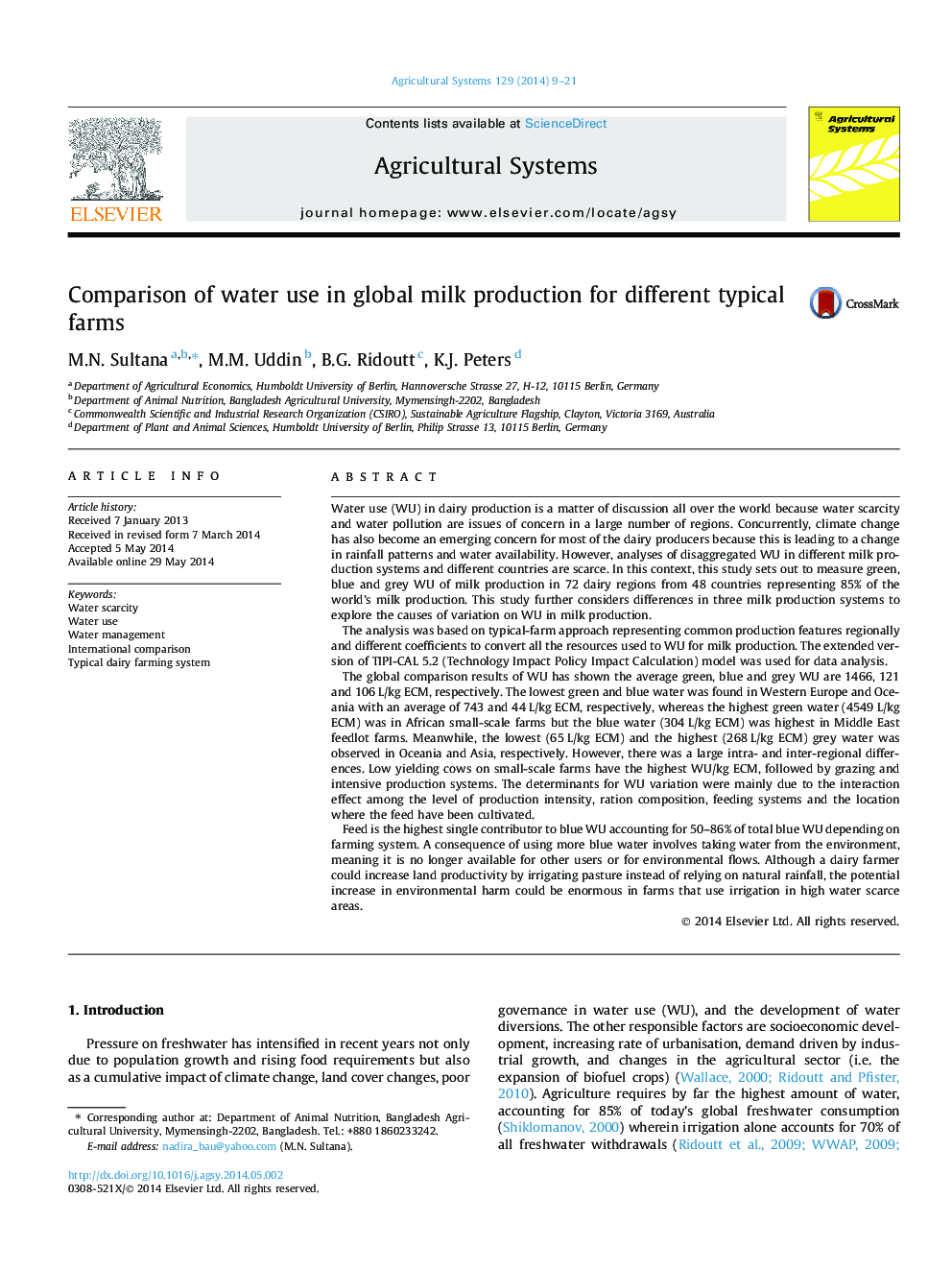| Article ID | Journal | Published Year | Pages | File Type |
|---|---|---|---|---|
| 4491221 | Agricultural Systems | 2014 | 13 Pages |
•World average green, blue and grey water are 1466, 121 and 106 L/kg ECM, respectively.•Highest green and blue water for Africa and Asia, with an intra- and inter-regional differences.•Small-scale farms have the highest WU/kg ECM, followed by grazing and intensive systems.•Feed is the highest blue water use accounting for 50–86% depending on farming system.•Variations due to interaction effect among productivity, feeding system and local water scarcity.
Water use (WU) in dairy production is a matter of discussion all over the world because water scarcity and water pollution are issues of concern in a large number of regions. Concurrently, climate change has also become an emerging concern for most of the dairy producers because this is leading to a change in rainfall patterns and water availability. However, analyses of disaggregated WU in different milk production systems and different countries are scarce. In this context, this study sets out to measure green, blue and grey WU of milk production in 72 dairy regions from 48 countries representing 85% of the world’s milk production. This study further considers differences in three milk production systems to explore the causes of variation on WU in milk production.The analysis was based on typical-farm approach representing common production features regionally and different coefficients to convert all the resources used to WU for milk production. The extended version of TIPI-CAL 5.2 (Technology Impact Policy Impact Calculation) model was used for data analysis.The global comparison results of WU has shown the average green, blue and grey WU are 1466, 121 and 106 L/kg ECM, respectively. The lowest green and blue water was found in Western Europe and Oceania with an average of 743 and 44 L/kg ECM, respectively, whereas the highest green water (4549 L/kg ECM) was in African small-scale farms but the blue water (304 L/kg ECM) was highest in Middle East feedlot farms. Meanwhile, the lowest (65 L/kg ECM) and the highest (268 L/kg ECM) grey water was observed in Oceania and Asia, respectively. However, there was a large intra- and inter-regional differences. Low yielding cows on small-scale farms have the highest WU/kg ECM, followed by grazing and intensive production systems. The determinants for WU variation were mainly due to the interaction effect among the level of production intensity, ration composition, feeding systems and the location where the feed have been cultivated.Feed is the highest single contributor to blue WU accounting for 50–86% of total blue WU depending on farming system. A consequence of using more blue water involves taking water from the environment, meaning it is no longer available for other users or for environmental flows. Although a dairy farmer could increase land productivity by irrigating pasture instead of relying on natural rainfall, the potential increase in environmental harm could be enormous in farms that use irrigation in high water scarce areas.
